
Light is one of the most important factors for plants. This is because light is crucial for photosynthesis. Photosynthesis starts when chlorophyll (contained in the green part of plant leaves) absorbs energy from sunlight. Plants use this light energy to change water (from their roots) and carbon dioxide (from the air) into oxygen and nutrients called sugars. Sugars serve as food, and the plants use some of the sugar for energy.
When thinking about light, you should consider what direction your windows face, if anything is blocking those windows, and your plant's individual needs.
There are many different types of lighting conditions, and it can take some trial and error to determine what kind of light you have. In general, light can be broken down into 4 main categories:
Direct light
Bright indirect light
Medium indirect light
Low light
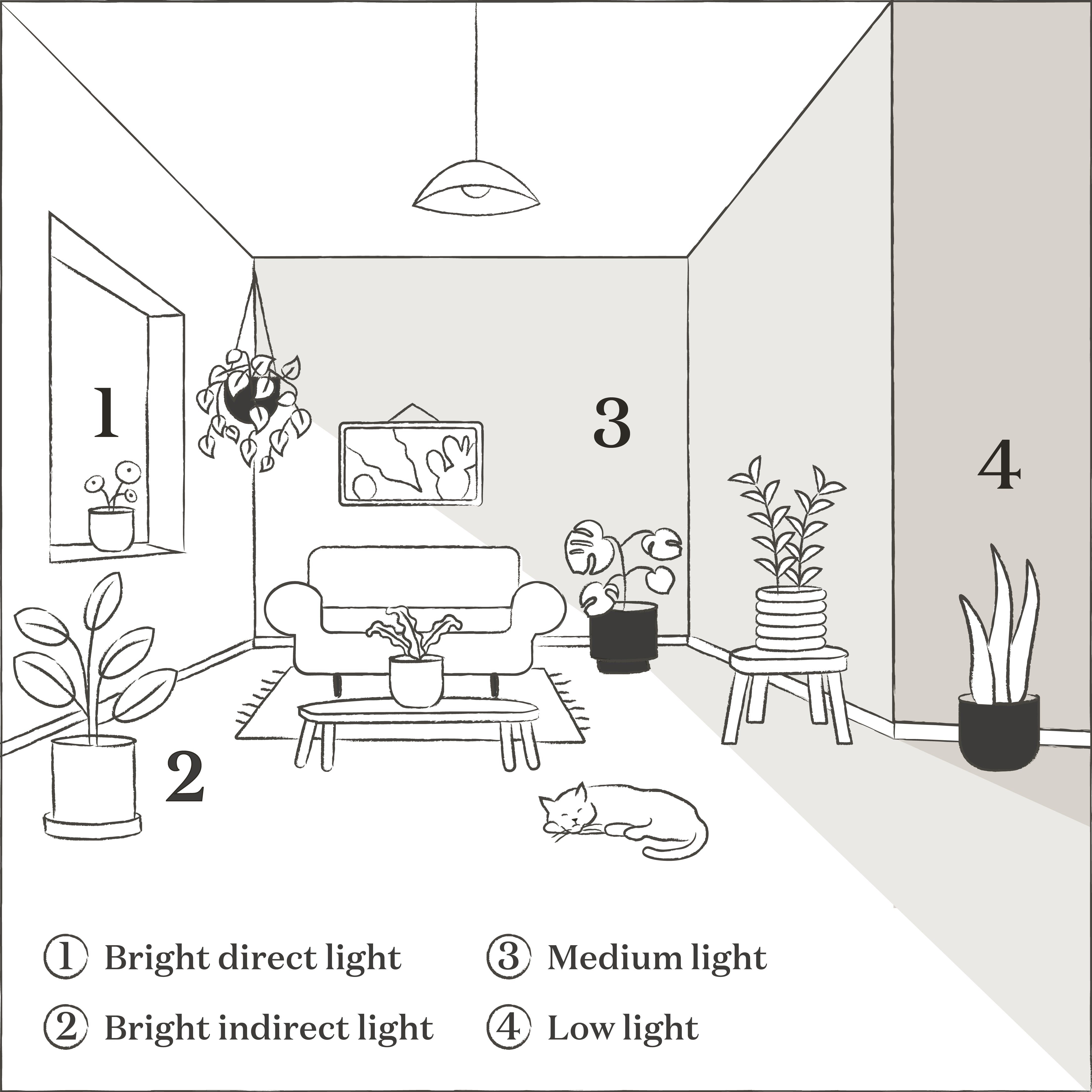
Houseplant lighting
Another consideration is which direction your windows face. This will affect how much light plants get throughout the da
North-facing windows
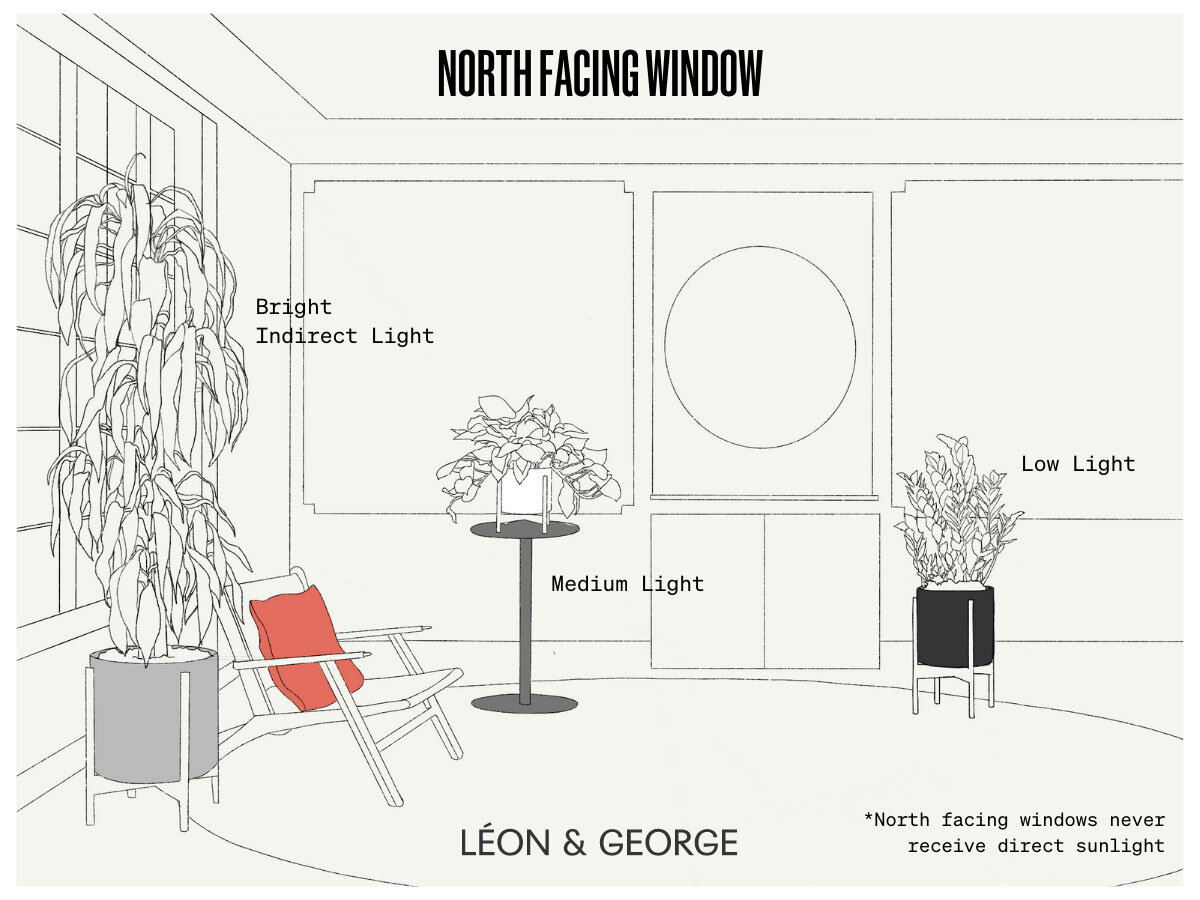
South-facing windows

East-facing windows
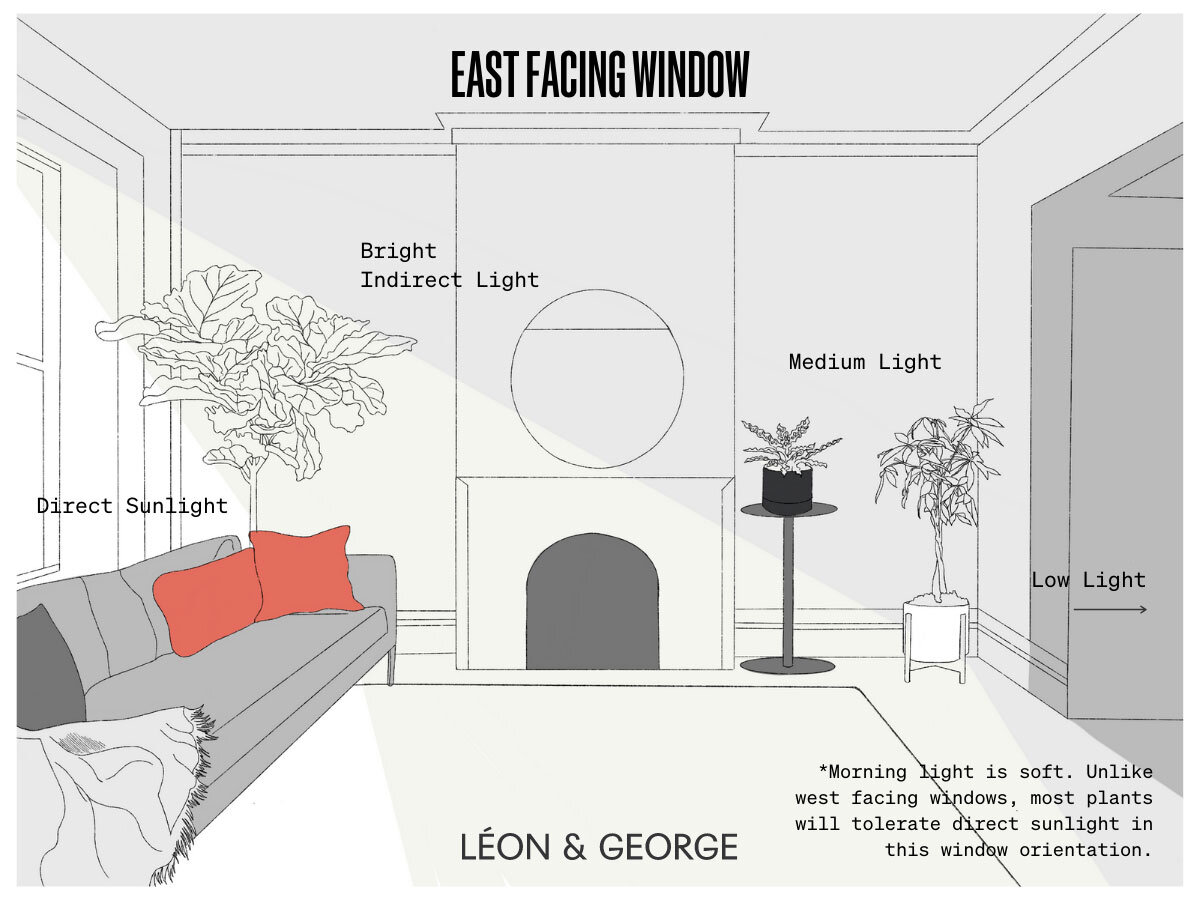
West-facing windows

Consider obstructions outside of your windows. Be aware of anything that blocks sunlight. Even if you have a south-facing window, if it’s right next to another house or is obstructed by trees, it will diffuse the amount of light coming in. Additionally, consider the size of your windows. This affects how much light comes in. In general, with large windows, you can place plants further away and they will receive a good amount of light. On the other hand, smaller windows only provide a limited range of light.

Tree obstructing window
It can be difficult to know what type of light is needed. Light requirements are often listed on the plant tag and can be a good place to start. You can also look up requirements online by searching for the plant’s name. If you don't know the light requirements, a safe jumping off point is bright indirect light. Try a location and look for changes in growth and coloring.
A good rule of thumb is the thicker the leaves, the more light the plant needs. Consider the thickness of cacti and succulent leaves compared to the delicate leaves of ferns. Cacti and succulent love the sun in the desert, whereas ferns thrive in forests under canopies of trees.
If your plant is really gangly and dramatically reaching towards the light source, it probably needs more light. If it doesn't get enough light, the plant will eventually die.
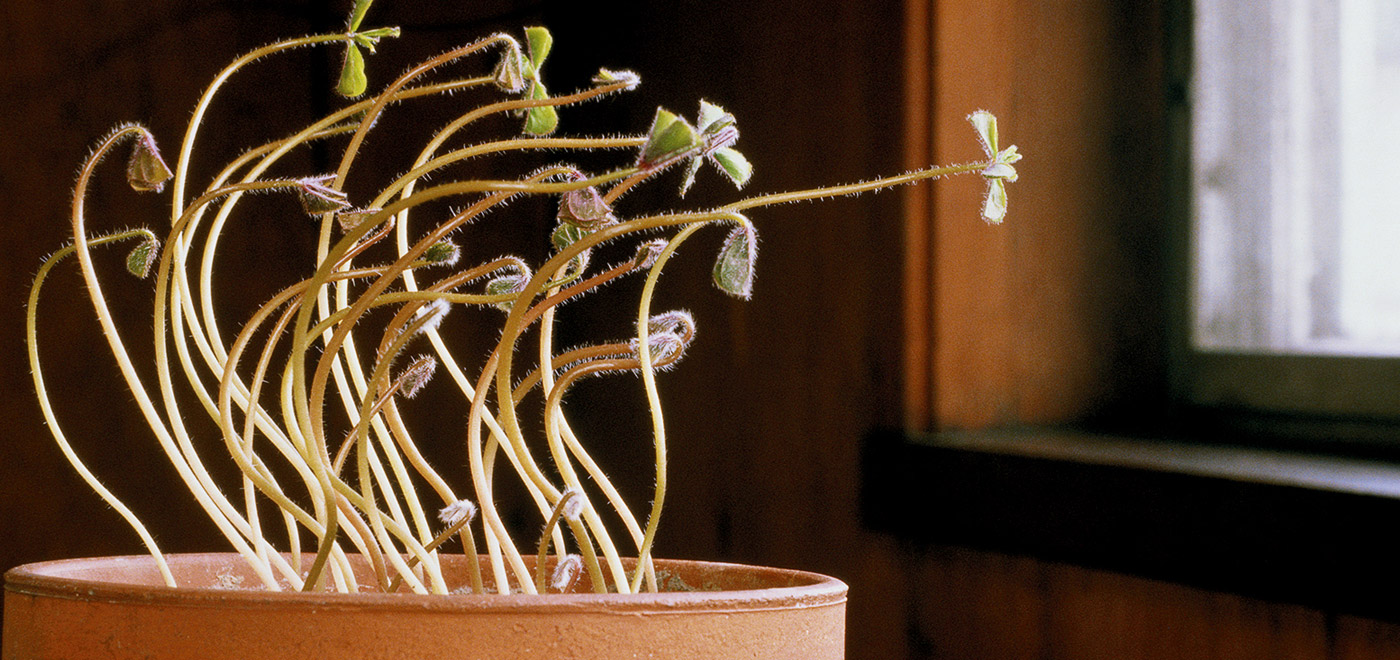
Gangly plant reaching towards light
It is possible to have too much light, but in most homes, it's a much bigger struggle for a plant to get enough light. If you notice that the leaves are being scorched and are turning white or very light brown, it’s a sign that the light is too intense.
:max_bytes(150000):strip_icc()/001_TheSpruce_Leafburn_PhoebeCheongPhoto-22d06583b839430582eec7348115b633.jpg)
Sun-scorched leaves
If your house doesn’t have adequate lighting to keep your plants happy, supplementing with grow lights is a great option. Grow lights are artificial lights that help stimulate photosynthesis and encourage growth. They come in a variety of color spectrums and light intensities. These are different than the typical bulbs used in lights and lamps, which don’t have the necessary spectrum of light that most plants need. The best grow lights include a variety of wavelengths that the human eye perceives as color.
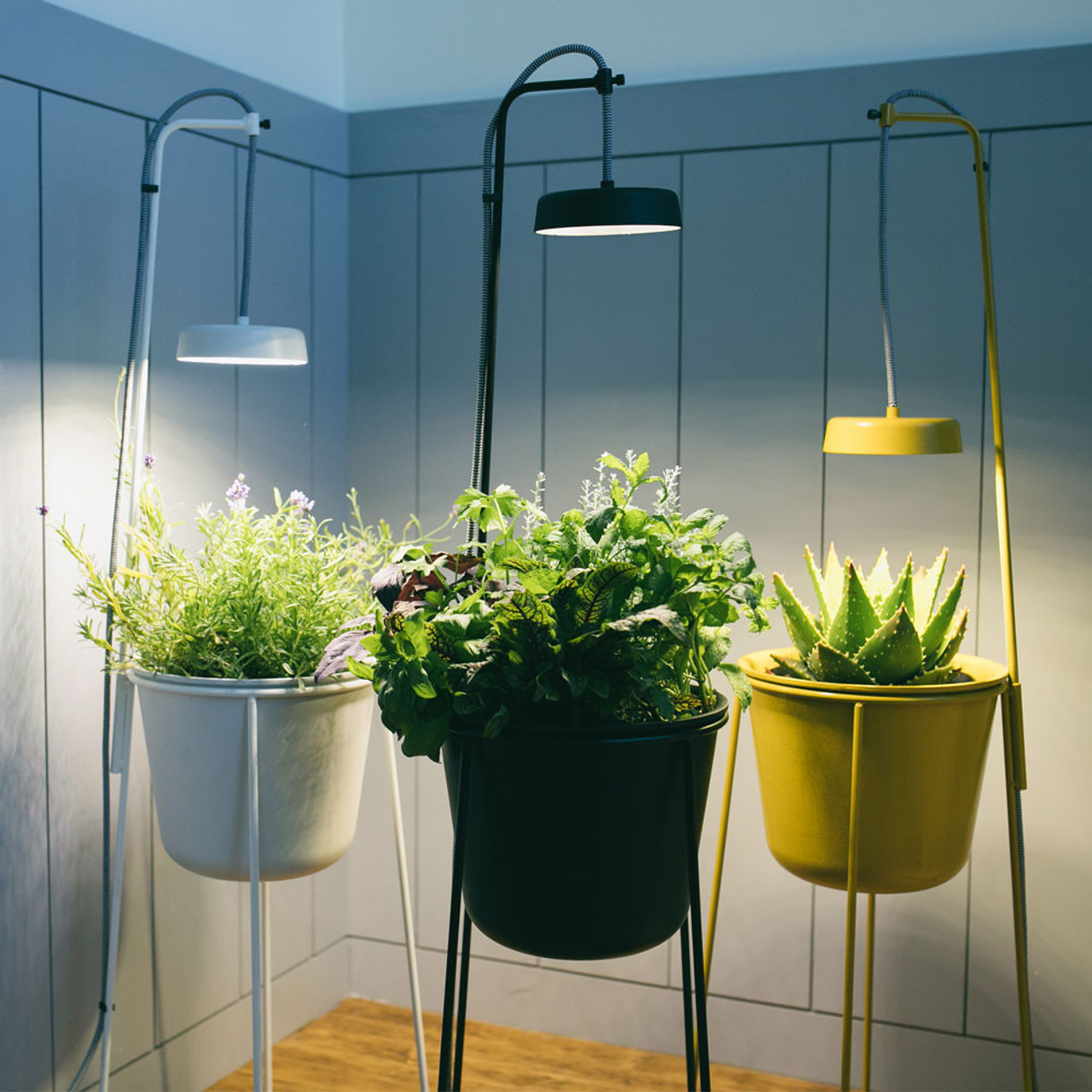
There are different types of grow lights.
Grow lights can range from $20-$2,000. Light can come as a bulb vs. a more industrial-style set up. When using grow lights, consider the temperature of the bulb and the plant’s proximity to it. You want your plant to be close enough to maximize the light coming from the lamp but far enough away to avoid getting burned by the heat, which can take some experimenting. In general, 6-24 inches is a good distance, depending on the type of grow light. For example, LED lights can be placed closer while fluorescent and incandescent need to be further away. Use grow lights for 8-12 hours per day, turning them off at night.